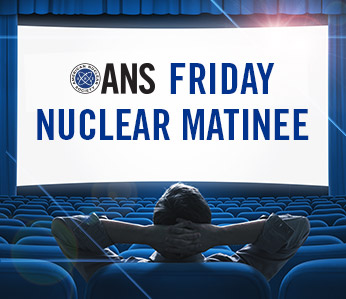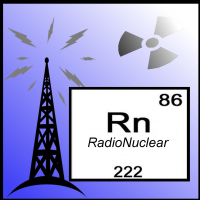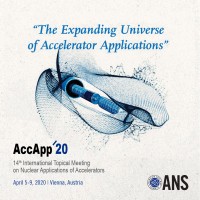Salary growth rate for nuclear engineers among highest
Nuclear engineers have the second-fastest growing salaries among six-figure earners, according to a recent study from AdvisorSmith, a business insurance resource company.
The ANS Nuclear Cafe is a blog owned and edited by the American Nuclear Society. Information contained on the ANS Nuclear Cafe has been provided by numerous sources. Therefore, the American Nuclear Society assumes no responsibility or liability for the accuracy of information contained herein. DISCLAIMER: The views expressed in posted articles do not necessarily reflect the views of the American Nuclear Society. The views expressed here are those of the individual authors. ANS takes no ownership of their views. The American Nuclear Society assumes no responsibility or liability for any use or operation of any methods, products, instructions, or ideas contained on this site.

A message from Schulz Electric
Schulz Electric™ Refurbishes Critical Circulating Water Pump Motor in Only Four Days
Nuclear engineers have the second-fastest growing salaries among six-figure earners, according to a recent study from AdvisorSmith, a business insurance resource company.
An article published over the weekend in the Tacoma News Tribune reports that the Benton Public Utility District in Kennewick, Wash., is saying no to more wind farms. Even though utilities are moving to decarbonize the grid, a report from the Benton PUD says that more wind farms “will contribute very little to keeping the regional power grid reliable and will not help Benton PUD solve our seasonal energy deficit problems.”
Yesterday, we had one of the nicer yet stranger events during this wholly strange time - that is, the meeting of the American Nuclear Society's Book Publishing Committee, of which yours truly is the Vice Chair. I say "nicer" because I always look forward to these meetings, given the opportunity they afford to interact with some of ANS' finest people and the fact that these meetings really get things done. I say "stranger" because it was a Zoom meeting and not face to face, around a table. What's even more impacting for me is the fact that the BPC meeting usually is the first event I attend at ANS' Annual and Winter meetings and it serves, thus, as the best possible kickoff for me. November, maybe. Maybe.
I'm writing this on National Maritime Day 2020, a day in which we think of and thank all those who have worked on the water moving people and things. Our nation's maritime history isn't as long as that of some other nations but it has been rich and, worldwide, significant. We've contributed a number of "firsts."
The second of our special series covering documentaries of early US reactors is this very thoroughly set up and filmed documentary on the Experimental Boiling Water Reactor, produced by Argonne National Laboratory.

Our matinee feature this week is a film produced by Argonne National Laboratory, entitled "Chicago Pile 1: The Day Tomorrow Began." This is the film history, from the official source, of the effort to design, construct and operate what became the first chain-reacting atomic pile in history.

With talk of the Coronavirus permeating every outlet and venue it might be good to take, at least shortly, a simple side trip for the purpose of distraction. And that side trip today is a look at an official AEC film documenting "The First Nuclear Reactor In Space: SNAP 10A."
 Episode 29 of RadioNuclear is now online! In this episode, we discuss the potential for micro-reactors and their use on military front-lines Do they offer a strategic advantage, or are they a liability? Additionally, does Gen Z understand nuclear? Apparently not, because 72% of Gen-Z doesn't know nuclear doesn't emit C02. Next, we discuss how congressional members on the hill are supporting the modernization of the NRC reactor oversight process. Lastly, some more good news out of India, because they have just agreed to build 6 new nuclear reactors with Westinghouse. Some truly great news!
Episode 29 of RadioNuclear is now online! In this episode, we discuss the potential for micro-reactors and their use on military front-lines Do they offer a strategic advantage, or are they a liability? Additionally, does Gen Z understand nuclear? Apparently not, because 72% of Gen-Z doesn't know nuclear doesn't emit C02. Next, we discuss how congressional members on the hill are supporting the modernization of the NRC reactor oversight process. Lastly, some more good news out of India, because they have just agreed to build 6 new nuclear reactors with Westinghouse. Some truly great news!
 As is the case on every 10APR, I find myself – even in the midst of the present national and, really, worldwide crisis – returning to thoughts of the USS THRESHER on this date in 1963. All of us who have been through the Naval Nuclear Power Program and served in submarines are aware to greater or lesser extent what happened; my experience, having served aboard one of the SUBSAFE boats whose development was a direct result of the accident, lends perhaps to more sustained reflection.
As is the case on every 10APR, I find myself – even in the midst of the present national and, really, worldwide crisis – returning to thoughts of the USS THRESHER on this date in 1963. All of us who have been through the Naval Nuclear Power Program and served in submarines are aware to greater or lesser extent what happened; my experience, having served aboard one of the SUBSAFE boats whose development was a direct result of the accident, lends perhaps to more sustained reflection.
At the end of the 1950’s the US Army was looking at its entire operational sphere to determine in what areas nuclear energy could be of benefit. While many of these are fairly well known today – for example, the small nuclear plants that were to have been installed at remote locations for powering bases like the Defense Early Warning stations – there are a few applications that remain obscure.
More and more folks are having to essentially home-school their children or relatives’ children as this whole virus thing plays out – and they are benefiting from a tremendous effort on the part of educators everywhere as transition is made to sent-out and, increasingly, remote educational materials. I thought it might be useful to present, with commentary, some short nuclear energy videos that you could watch or use if you check down through materials or want to supplant them. (We really do have to take a moment to applaud our educators, everywhere, for what they’re facing – and the administrators as well.)
Our ANS Nuclear Cafe matinee feature this week is a fascinating in-depth look at the fabrication of major components for, and the construction of, the Shippingport Atomic Power Station. In this film you’ll get to see some very interesting, rarely seen things; I will add some comments above and beyond what’s described in the film below.
This week I had some considerable interaction on social media in the area of replacing fossil power at existing sites with micro reactors or SMR’s (Small Modular Reactors.) As we see real progress happening now in these exciting reactor fields (NuScale and Oklo come to mind first, but there are others!) I’d like to share five things to think about as we begin to seriously consider replacing fossil power (coal, oil) at particular sites with nuclear.
Our ANS Nuclear Cafe Friday Matinee feature this week is a film produced to detail the United States Army’s nuclear power program; it was archived and then put online by the US Army Corps of Engineers, Baltimore.
 The 14th International Topical Meeting on Nuclear Applications of Accelerators (AccApp'20) is being organized by the Accelerator Applications Division (AAD) of the American Nuclear Society in cooperation with the International Atomic Energy Agency. AccApp '20 will be held April 5-9 at IAEA headquarters in Vienna.
The 14th International Topical Meeting on Nuclear Applications of Accelerators (AccApp'20) is being organized by the Accelerator Applications Division (AAD) of the American Nuclear Society in cooperation with the International Atomic Energy Agency. AccApp '20 will be held April 5-9 at IAEA headquarters in Vienna.
Friends and colleagues - Usually I write about "the old days" of nuclear in this space but something came up in current events that really sticks in my craw, and I have to shine the spotlight on it here. So please indulge me and read along. (We'll get back to "the old days" soon enough, don't you worry!)
 Thank you for joining us for Episode 28 of RadioNuclear! This week, we talk about the recent false alarm involving the Pickering Nuclear Generating Station in Canada and about an opinion piece over a recent MIT study claiming that nuclear is not needed for deep decarbonization. We also discuss about why some regions of the world have an easier time building nuclear plants, when compared to other regions of the world.
Thank you for joining us for Episode 28 of RadioNuclear! This week, we talk about the recent false alarm involving the Pickering Nuclear Generating Station in Canada and about an opinion piece over a recent MIT study claiming that nuclear is not needed for deep decarbonization. We also discuss about why some regions of the world have an easier time building nuclear plants, when compared to other regions of the world.
Over the years that I've been writing for ANS, I've managed largely through that association to come into possession of a number of fairly odd things. I mean, all of us have things that the "normal person" (and by that I mean non-nuclear) would find pretty strange, but I'm telling you I have some strange things that are a bit further out than garden-variety strange. I'd like to tell you about just two.